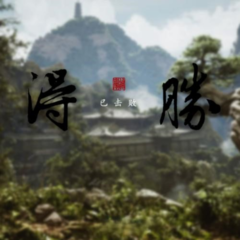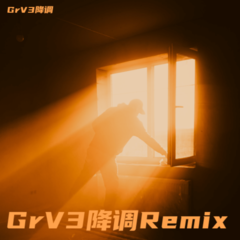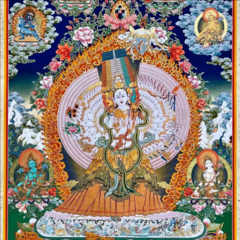Coleman Hawkins
Coleman Hawkins是爵士乐历史上第一位重要的次中音萨克斯管演奏家,同时他也是有史以来最伟大的演奏家之一。他的演艺生涯持续了整整四十年(1925年至1965年),在此期间他的技艺堪与任何一位同行抗衡。Coleman Hawkins从五岁起,就开始接受正规的钢琴教育,在七岁时他转向大提琴演奏,两年后开始演奏次中音萨克斯管。在当时,萨克斯管仍被人们视为一种新鲜玩意,萨克斯管只是在歌舞剧演出或者作为长号的代用品在行队中偶尔使用一下,这与其今日在乐队中占据的重要地位相比,实在是难以想象的。霍金斯积极探索自己独特的声音,他选择了萨克斯管作为自己终生的追求。年仅十二岁的他开始了职业演奏生涯,那一年,玛咪·史密斯雇佣他在堪萨斯城的剧院舞池中演出。直到1923年6月,霍金斯一直和她一同演出,并在许多录音中担任背景配器角色。终于在这一年的夏天,霍金斯离开了史密斯,成为了一位自由音乐家,他独自一人来到纽约闯荡,那里是爵士乐的中心。霍金斯和威尔布·斯威特曼合作了一段时间。在1923年8月首次灌制唱片,合作者是Fletcher Henderson。终于,在汉德森的乐队中,霍金斯找到了自己的位置。在1924年1月,汉德森组建自己的大型管弦乐队时,霍金斯是他的明星次中音萨克斯管。汉德森的大乐队是那个时期最为著名,最为成功的乐队,他们的成功使霍金斯的名字传遍了整个爵士乐坛。1924年,霍金斯已经被公认是最好的次中音萨克斯管演奏。然而自从路易斯·阿姆期特朗加入了汉德森的乐队之后,情况发生了重大的变化。阿姆斯特朗的天才的演奏和歌唱,迅速之间夺走了霍金斯在乐队中主角的位置。1925年,霍金斯已经成为了一位真正重要的独奏家,一位有鲜明个人风格的演奏家。他在弗莱彻·汉德森的管弦乐队中一直呆到1934年,在这段时间里,他几乎成为了次中音萨克斯管演奏的权威。在和汉德森的乐队合作之外,霍金斯有时也会和布鲁斯歌手再度合作,重温昔日的时光。他曾经和麦金尼的“摘棉花者”乐队合作过。在1929年,他和雷德·麦坎奇录制了第一首古典民瑶。1934年霍金斯厌倦了在汉镕森乐队中艰难奋斗的生活。于是他转向欧洲寻求发展,海外的生活整整持续了五年,最初他在英国和杰克·海尔顿乐队合作,之后自己独自一人辗转于欧洲大陆各国之间。随第二次世界大战日益临近,在1939年霍金斯返回美国。尽管五年时间时过境迁,Lester Young已经倔起,霍金斯的出现仍然证明了他是最棒的次中音萨克斯管演奏家。他在几次现场即兴演奏会上证明了他仍然宝刀不老。是年录制的《灵与肉》也许是他最佳的一张唱片。事实上新人的涌现不但没有削弱霍金斯的斗志,反而促使他更加努力进取。然而随着战争的到来,爵士乐音乐家的处境也变得愈发的艰难。1940年他领导了一支大乐队,但以失败告终。之后他成为了纽约五十二大街的常客,他一些最好的唱片就是四十年代初录制的。到1965年时,霍金斯甚至在他的音乐中吸收了科特兰的一些东西,让人们看到了一位永远年轻的他。1965年是Coleman Hawkins最后的好时光。也许是年事已高,也许是受到了挫折,他开始失去对生活的兴趣.他放弃了饮食,以酒当食,身体迅速垮掉了。唯一令人惊奇的举动是在1969年初的爵士爱乐乐团的演出中,他表现得非常出色,让入们看到了一位大师应有的水乎。然而,这是他人生最后三年半中仅有的一次。by Scott YanowColeman Hawkins was the first important tenor saxophonist and he remains one of the greatest of all time. A consistently modern improviser whose knowledge of chords and harmonies was encyclopedic, Hawkins had a 40-year prime (1925-1965) during which he could hold his own with any competitor.Coleman Hawkins started piano lessons when he was five, switched to cello at age seven, and two years later began on tenor. At a time when the saxophone was considered a novelty instrument, used in vaudeville and as a poor substitute for the trombone in marching bands, Hawkins sought to develop his own sound. A professional when he was 12, Hawkins was playing in a Kansas City theater pit band in 1921, when Mamie Smith hired him to play with her Jazz Hounds. Hawkins was with the blues singer until June 1923, making many records in a background role and he was occasionally heard on instrumentals. After leaving Smith, he freelanced around New York, played briefly with Wilbur Sweatman, and in August 1923 made his first recordings with Fletcher Henderson. When Henderson formed a permanent orchestra in January 1924, Hawkins was his star tenor.Although (due largely to lack of competition) Coleman Hawkins was the top tenor in jazz in 1924, his staccato runs and use of slap-tonguing sound quite dated today. However, after Louis Armstrong joined Henderson later in the year, Hawkins learned from the cornetists relaxed legato style and advanced quickly. By 1925, Hawkins was truly a major soloist, and the following year his solo on Stampede became influential. Hawk (who doubled in early years on clarinet and bass sax) would be with Fletcher Hendersons Orchestra up to 1934, and during this time he was the obvious pacesetter among tenors; Bud Freeman was about the only tenor who did not sound like a close relative of the hard-toned Hawkins. In addition to his solos with Henderson, Hawkins backed some blues singers, recorded with McKinneys Cotton Pickers, and, with Red McKenzie in 1929, he cut his first classic ballad statement on One Hour.By 1934, Coleman Hawkins had tired of the struggling Fletcher Henderson Orchestra and he moved to Europe, spending five years (1934-1939) overseas. He played at first with Jack Hyltons Orchestra in England, and then freelanced throughout the continent. His most famous recording from this period was a 1937 date with Benny Carter, Alix Combille, Andre Ekyan, Django Reinhardt, and Stephane Grappelli that resulted in classic renditions of Crazy Rhythm and Honeysuckle Rose. With World War II coming close, Hawkins returned to the U.S. in 1939. Although Lester Young had emerged with a totally new style on tenor, Hawkins showed that he was still a dominant force by winning a few heated jam sessions. His recording of Body and Soul that year became his most famous record. In 1940, he led a big band that failed to catch on, so Hawkins broke it up and became a fixture on 52nd Street. Some of his finest recordings were cut during the first half of the 1940s, including a stunning quartet version of The Man I Love. Although he was already a 20-year veteran, Hawkins encouraged the younger bop-oriented musicians and did not need to adjust his harmonically advanced style in order to play with them. He used Thelonious Monk in his 1944 quartet; led the first official bop record session (which included Dizzy Gillespie and Don Byas); had Oscar Pettiford, Miles Davis, and Max Roach as sidemen early in their careers; toured in California with a sextet featuring Howard McGhee; and in 1946, utilized J.J. Johnson and Fats Navarro on record dates. Hawkins toured with Jazz at the Philharmonic several times during 1946-1950, visited Europe on a few occasions, and in 1948 recorded the first unaccompanied saxophone solo, Picasso.By the early 50s, the Lester Young-influenced Four Brothers sound had become a much greater influence on young tenors than Hawkins style, and he was considered by some to be out of fashion. However, Hawkins kept on working and occasionally recording, and by the mid-50s was experiencing a renaissance. The up-and-coming Sonny Rollins considered Hawkins his main influence, Hawk started teaming up regularly with Roy Eldridge in an exciting quintet (their appearance at the 1957 Newport Jazz Festival was notable), and he proved to still be in his prime. Coleman Hawkins appeared in a wide variety of settings, from Red Allens heated Dixieland band at the Metropole and leading a bop date featuring Idrees Sulieman and J.J. Johnson, to guest appearances on records that included Thelonious Monk, John Coltrane, and (in the early 60s) Max Roach and Eric Dolphy. During the first half of the 1960s, Coleman Hawkins had an opportunity to record with Duke Ellington, collaborated on one somewhat eccentric session with Sonny Rollins, and even did a bossa nova album. By 1965, Hawkins was even showing the influence of John Coltrane in his explorative flights and seemed ageless.Unfortunately, 1965 was Coleman Hawkins last good year. Whether it was senility or frustration, Hawkins began to lose interest in life. He practically quit eating, increased his drinking, and quickly wasted away. Other than a surprisingly effective appearance with Jazz at the Philharmonic in early 1969, very little of Hawkins work during his final three and a half years (a period during which he largely stopped recording) is up to the level one would expect from the great master. However, there are dozens of superb Coleman Hawkins recordings currently available and, as Eddie Jefferson said in his vocalese version of Body and Soul, he was the king of the saxophone.


 Smoke Gets in Your Eyes - Coleman Hawkins
Smoke Gets in Your Eyes - Coleman Hawkins
























 敕勒歌 - 古歌童声合唱团
敕勒歌 - 古歌童声合唱团